Table of Contents:
• Deck Choice Limitation & the Innovation of the Metagame
2010 - The Best Format Ever?
The 2010 Worlds format (Diamond & Pearl - HS Unleashed) is one of the most celebrated retro formats of all time. The deck diversity, unique strategies, and addictive gameplay has kept players, like myself, coming back to the same 1,500 or so cards for years, and will for years to come.
What you may not know however, is that this format has a significant number of detractors that have made their voices heard over the years. No format is without its flaws, though what can be called a "flaw" can differ to each person you ask. When a flaw becomes a problem in retro, is when it is an opinion held by many to discredit or devalue something.
In this article, I'd like to summarize many of the problems people have with the 2010 Worlds format, while adding my additional commentary into some concerns that may be missguided.
If you’re not at all familiar with the 2010 Worlds format, some of this may fly over your head, but that’s okay! I’ve made an extensive beginner’s guide video to the format that you can watch here: 2010 Worlds For Dummies (YouTube). And you can checkout the format's decks in the 'Decks by Era' section here, and even 2010 World's results here.
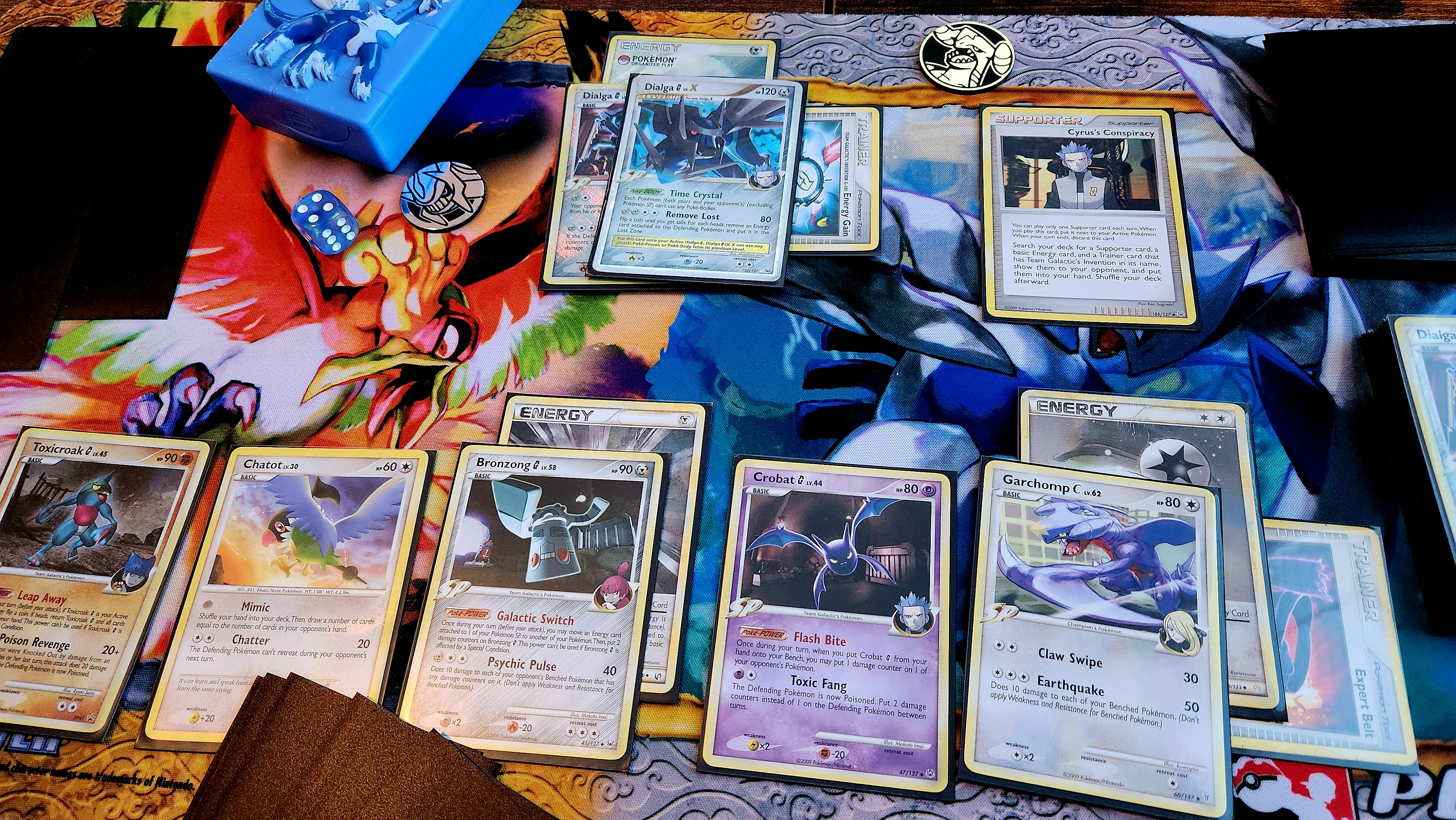
Deck Building Limitations:
There are few formats with as many deck building limitations as 2010 Worlds. The likes of Gardevoir Gallade and LuxChomp come to mind when players are constructing their decks for this format. In many formats, players decide between making more consistent lists with less tech cards and lists that are more teched out at the cost of some consistency to their strategy. Modern iterations of 2010 Worlds lists, however, force players to respect the best decks in their construction. It may not seem obvious on the surface, so let’s break down the individual limitations that you’ll see.
Supporter lines:
While lists from the 2010 World Championships at the time had not adapted to the presence of Gardevoir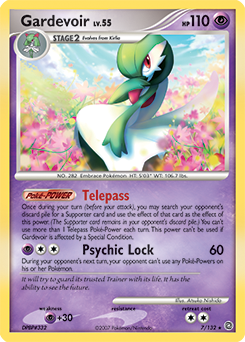 , most modern lists have. Gardevoir's Telepass is one of the strongest Poke-Powers in the format, and it must be respected if you want your deck to have a chance at beating it.
, most modern lists have. Gardevoir's Telepass is one of the strongest Poke-Powers in the format, and it must be respected if you want your deck to have a chance at beating it.

The way this is most often seen is by playing a smaller number of unique Supporter cards in decks. Despite the existence of VS Seeker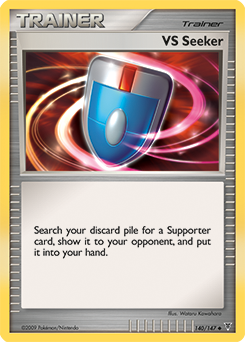 in the format, decks are running very little variety in Supporter cards, as to not give Gardevoir a leg up in games. A popular Supporter tech in 2009, Lucian’s Assignment
in the format, decks are running very little variety in Supporter cards, as to not give Gardevoir a leg up in games. A popular Supporter tech in 2009, Lucian’s Assignment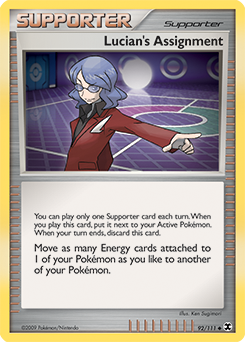 , is a rare sight in 2010. If your deck already has a terrible Gardevoir matchup, such as Kingdra Prime decks, you may choose to run cards like Palmer’s Contribution
, is a rare sight in 2010. If your deck already has a terrible Gardevoir matchup, such as Kingdra Prime decks, you may choose to run cards like Palmer’s Contribution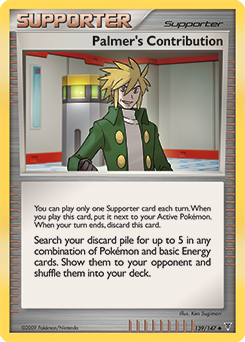 anyway, as you likely weren’t going to win against a set-up Gardevoir deck to begin with. Most other decks, though, will keep Telepass in mind.
anyway, as you likely weren’t going to win against a set-up Gardevoir deck to begin with. Most other decks, though, will keep Telepass in mind.
The exception to this rule is SP focused decks, as running multiple different Supporter cards works perfectly in tandem with Cyrus's Conspiracy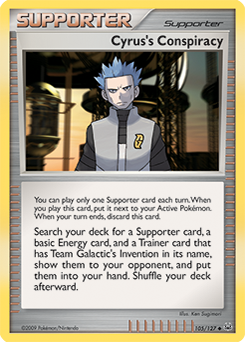 that helps them find Supporters. The toolbox of Supporters also helps SP decks address different situations as they come, which is a specialty of SP decks.
that helps them find Supporters. The toolbox of Supporters also helps SP decks address different situations as they come, which is a specialty of SP decks.
In addition to the limitation on what Supporters decks can play comes when you can play your Supporters. Playing an early Judge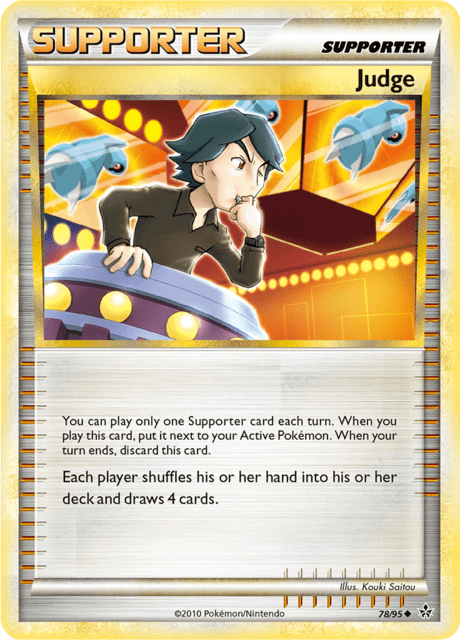 to get an advantage against Gardevoir may seem optimal, until the Gardevoir has access to using that Judge against you via Telepass for the rest of the game...
to get an advantage against Gardevoir may seem optimal, until the Gardevoir has access to using that Judge against you via Telepass for the rest of the game...
Spiritomb:
Spiritomb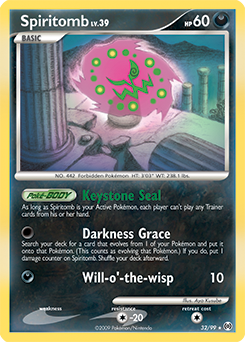 is a powerful card seen in nearly every evolution deck to some extent. Its Keystone Seal Poke-Body slows down faster decks like SP, Gyarados, and Jumpluff, giving slower evolution decks time (and help) to set up. It also blocks Power Spray
is a powerful card seen in nearly every evolution deck to some extent. Its Keystone Seal Poke-Body slows down faster decks like SP, Gyarados, and Jumpluff, giving slower evolution decks time (and help) to set up. It also blocks Power Spray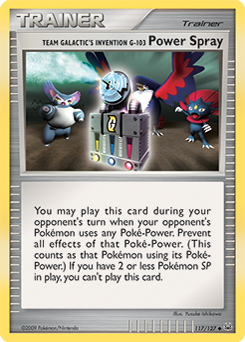 , a disruptive card seen in all SP decks. Spiritomb’s Darkness Grace searches out an evolution deck's necessary Claydol
, a disruptive card seen in all SP decks. Spiritomb’s Darkness Grace searches out an evolution deck's necessary Claydol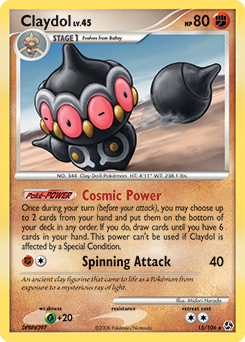 and their attackers. The deck building against and around Spiritomb is seen in nearly every deck. The Keystone Seal Poke-Body has to be respected if you want to be able to play on an even field against CurseGar, Gardevoir, and Flygon decks. Otherwise powerful cards are not played in most decks, and otherwise optional cards are seen frequently. So how does this apply? Let’s take a look at some Trainer cards that don’t see play despite their power.
and their attackers. The deck building against and around Spiritomb is seen in nearly every deck. The Keystone Seal Poke-Body has to be respected if you want to be able to play on an even field against CurseGar, Gardevoir, and Flygon decks. Otherwise powerful cards are not played in most decks, and otherwise optional cards are seen frequently. So how does this apply? Let’s take a look at some Trainer cards that don’t see play despite their power.

Poke Drawer +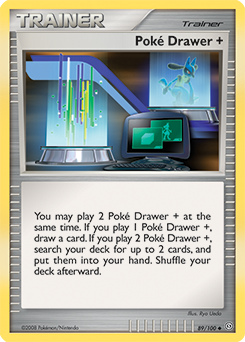 is a powerful Trainer card in Claydol decks that can search any 2 cards out of the deck. We saw it used in David Cohen’s Stallgon deck that placed 2nd at the 2009 World Championships in Seniors, among other decks. With the near guarantee of a Spiritomb in the active spot in the first or second turn, a lot of item consistency has to be reconsidered in decklists. Pokedex HANDY910
is a powerful Trainer card in Claydol decks that can search any 2 cards out of the deck. We saw it used in David Cohen’s Stallgon deck that placed 2nd at the 2009 World Championships in Seniors, among other decks. With the near guarantee of a Spiritomb in the active spot in the first or second turn, a lot of item consistency has to be reconsidered in decklists. Pokedex HANDY910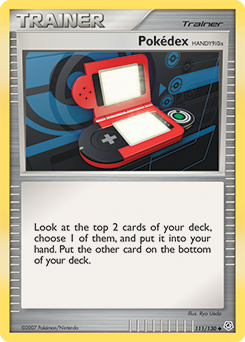 is similarly absent from lists. The new trainer VS Seeker
is similarly absent from lists. The new trainer VS Seeker sees sparing use in decks, both due to the Supporter limitations described above, and the presence of Spiritomb.
sees sparing use in decks, both due to the Supporter limitations described above, and the presence of Spiritomb.
In the space created by cards taken out of decks, we see new innovations added to take on Spiritomb. Roserade GL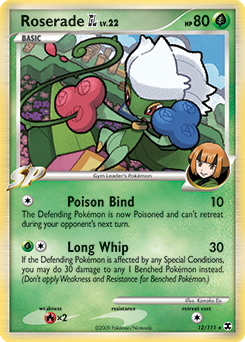 is an example of this in SP decks. Its Poison Bind wears down Spiritombs fast, stops them retreating, and can potentially knock 'em out going back into the SP player's turn, giving that player access to Trainers again. Regice
is an example of this in SP decks. Its Poison Bind wears down Spiritombs fast, stops them retreating, and can potentially knock 'em out going back into the SP player's turn, giving that player access to Trainers again. Regice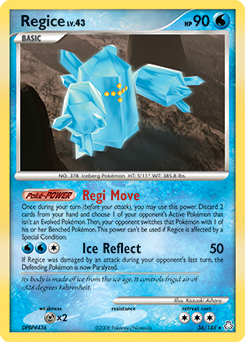 is a card already played in Gyarados and Regigigas decks for its Regi Move PokePower to discard cards, but it takes on more importance as a check to Spiritomb. Just be careful to not let it get trapped in the Active Spot while a Spiritomb is there. Some brave players have even slotted Special Darkness Energy into their Gyarados lists as an additional way to beat Spiritomb, as their already mandatory Sableye
is a card already played in Gyarados and Regigigas decks for its Regi Move PokePower to discard cards, but it takes on more importance as a check to Spiritomb. Just be careful to not let it get trapped in the Active Spot while a Spiritomb is there. Some brave players have even slotted Special Darkness Energy into their Gyarados lists as an additional way to beat Spiritomb, as their already mandatory Sableye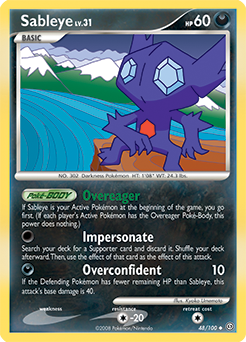 can use it to cleave through Spiritomb. As an evolution deck, your best response to Spiritomb may be putting up a Spiritomb of your own, setting up behind it and forcing the opponent to make the first move.
can use it to cleave through Spiritomb. As an evolution deck, your best response to Spiritomb may be putting up a Spiritomb of your own, setting up behind it and forcing the opponent to make the first move.

Probably the most obvious impact on the meta brought by Spiritomb is DialgaChomp’s rise to stardom. Dialga G Lv.X’s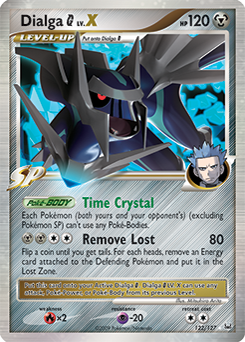 Time Crystal turns off Spiritomb’s Keystone Seal. Dialga can also shrug off Psychic attacks from Gardevoir and Gengar, while additionally troubling Flygon decks that rely heavily on their PokeBodies. Turning off Spiritomb means that DialgaChomp decks will once again get access to their powerful SP-focused Trainer cards. DialgaChomp, in itself, has caused a chain reaction of deck building innovations from its presence in the meta (such as Blaziken FB Lv.X
Time Crystal turns off Spiritomb’s Keystone Seal. Dialga can also shrug off Psychic attacks from Gardevoir and Gengar, while additionally troubling Flygon decks that rely heavily on their PokeBodies. Turning off Spiritomb means that DialgaChomp decks will once again get access to their powerful SP-focused Trainer cards. DialgaChomp, in itself, has caused a chain reaction of deck building innovations from its presence in the meta (such as Blaziken FB Lv.X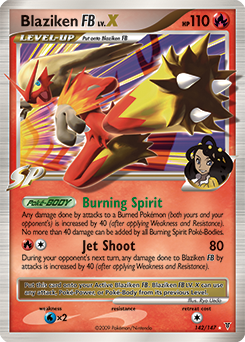 in LuxChomp), but we’d be here all day following the cause and effect wild goose chase of each and every meta change, so let’s leave it there.
in LuxChomp), but we’d be here all day following the cause and effect wild goose chase of each and every meta change, so let’s leave it there.
Decks running Spiritomb also have to consider how they build their decks. Warp Energy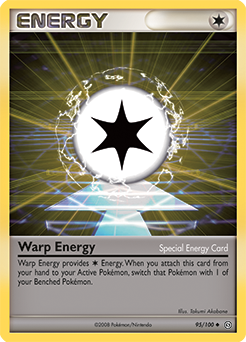 has become a staple choice to escape attacks like Roserade GL’s Poison Bind and infinite traps created by Spiritomb’s Colorless Resistance into Chatot
has become a staple choice to escape attacks like Roserade GL’s Poison Bind and infinite traps created by Spiritomb’s Colorless Resistance into Chatot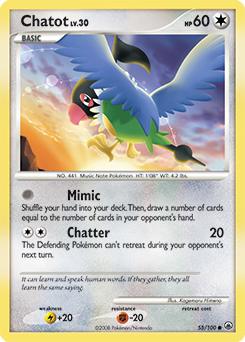 and Flygon decks.
and Flygon decks.
Power / Trainer Lock Conundrum:
Lastly, the never ending question of what to tech your deck for. In the 2010 season, Luxray GL Lv.X’s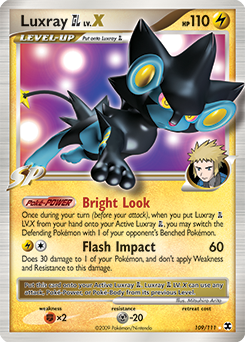 and Crobat G
and Crobat G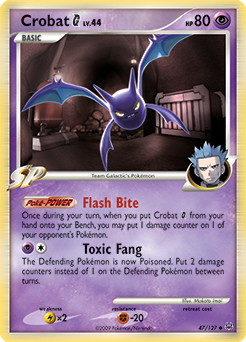 saw near ubiquitous use in Gyarados and Jumpluff decks to gust and increase the damage of your attacks, but in 2023, a bit of a problem forms;
saw near ubiquitous use in Gyarados and Jumpluff decks to gust and increase the damage of your attacks, but in 2023, a bit of a problem forms;
The prevalence of Power Lock from Power Spray in SP decks and Psychic Lock in Gardevoir decks has pointed some players towards using Trainer-based gusting and damage modifiers, in Poke Blower +
in SP decks and Psychic Lock in Gardevoir decks has pointed some players towards using Trainer-based gusting and damage modifiers, in Poke Blower +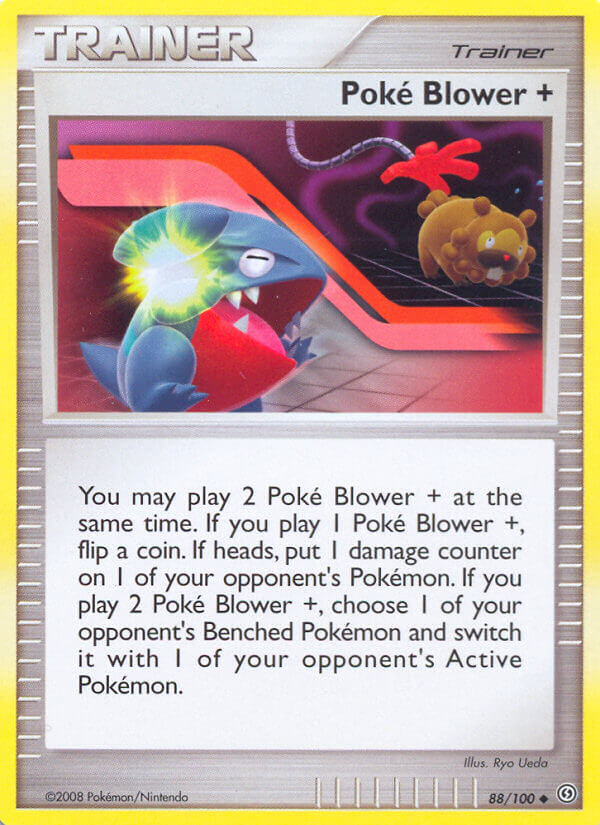 , Pokemon Reversal
, Pokemon Reversal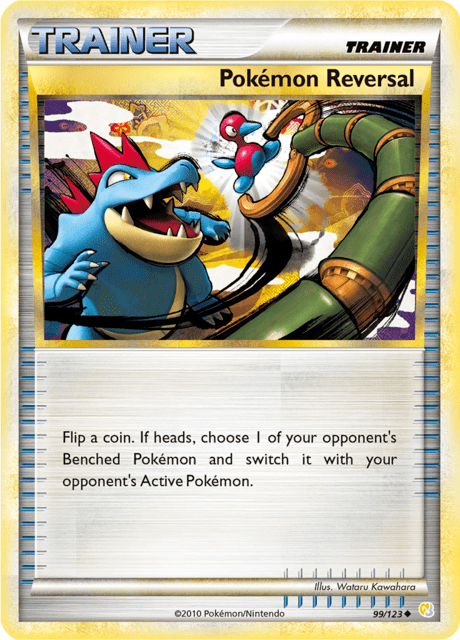 , and Plus Power
, and Plus Power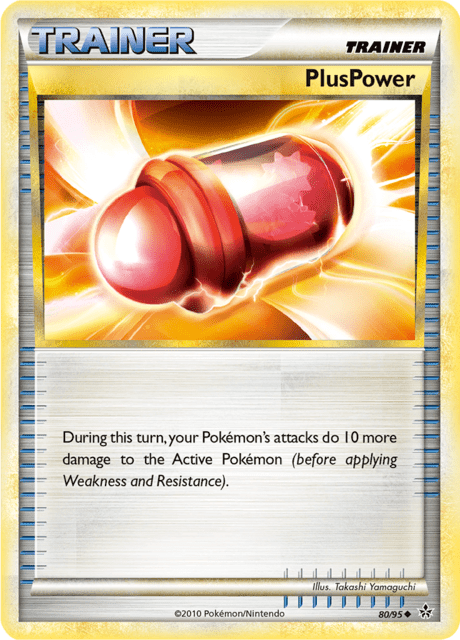 . With Gardevoir and SP being great decks, you can rely on these Trainer cards to answer those matchups.
. With Gardevoir and SP being great decks, you can rely on these Trainer cards to answer those matchups.
The conundrum comes from our friend Spiritomb . Decks that rely on Trainer-based gust and damage modifiers will no longer be able to aptly answer CurseGar and Magnezone decks that hide behind Spiritomb’s Keystone Seal the entire game.
. Decks that rely on Trainer-based gust and damage modifiers will no longer be able to aptly answer CurseGar and Magnezone decks that hide behind Spiritomb’s Keystone Seal the entire game.
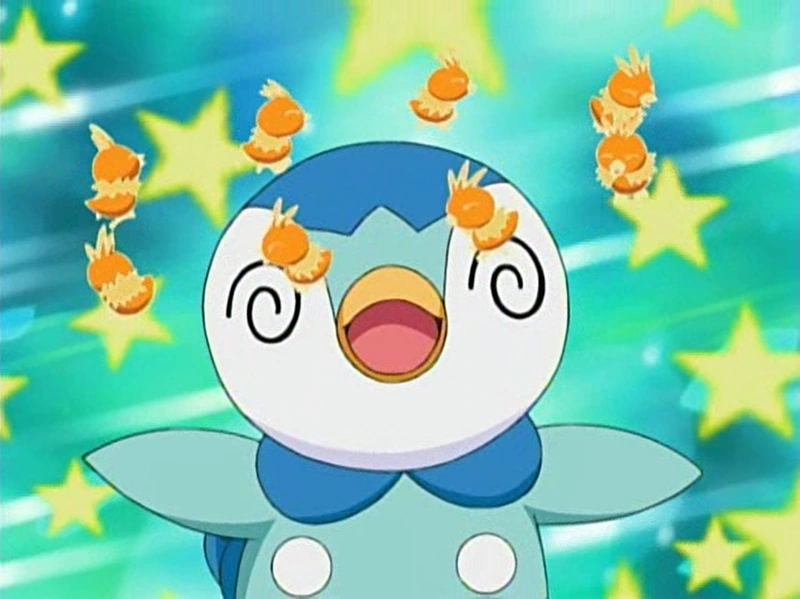
Is attack based gusting the answer? Well, no. The prevalence of Unown G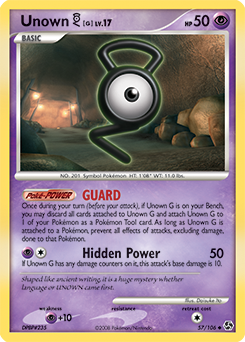 which can block attack gusting effects, and the inability to attack after using a gust attack means it’s usually not the answer for aggressive decks. Maybe Supporter cards like Buck’s Training
which can block attack gusting effects, and the inability to attack after using a gust attack means it’s usually not the answer for aggressive decks. Maybe Supporter cards like Buck’s Training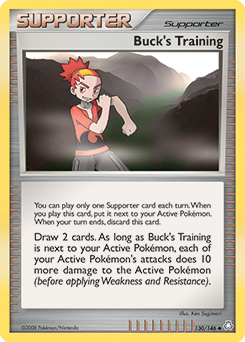 can supplement as a damage modifier, but do you really want to give Gardevoir decks the ability to Telepass your Buck’s Training for the rest of the game?
can supplement as a damage modifier, but do you really want to give Gardevoir decks the ability to Telepass your Buck’s Training for the rest of the game?
For newer players to the format, these limitations can make your head spin, but for people who’ve played a few games, you’ve probably found your preference, or are prepared to make a meta call into an event on which decks will and will not show up. For as many options that have been opened up by exploring the wealth of cards available, just as many options are shut down as lists are optimized to deal with the meta behemoths.
Lock decks: (SableLock / ChenLock / Flygon / Gliscor)
Some of the most polarizing decks in the format are based around a locking mechanic. Unlike lock decks from years following and years prior, the lock decks in the 2009 and 2010 season do not have reliable energy denial in Energy Removal 2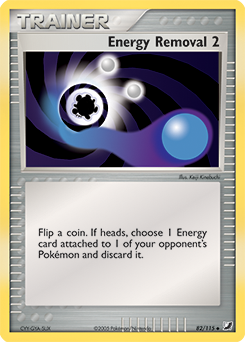 , nor its successor Crushing Hammer
, nor its successor Crushing Hammer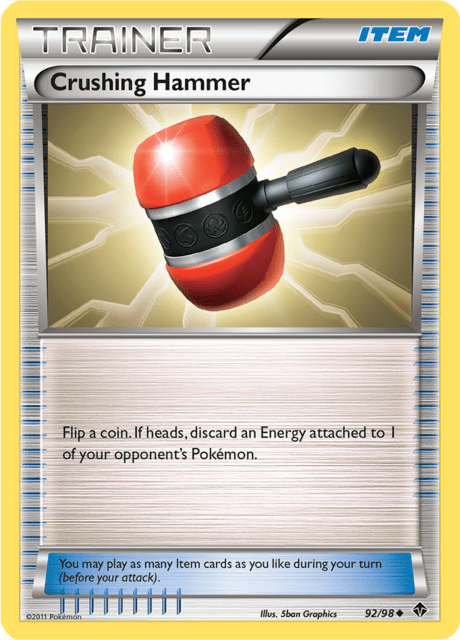 . 2010 has a wealth of lock decks, most popularly seen in Trainer lock from CurseGar and PokePower lock from Gardevoir, but I want to focus on the more hardcore lock decks in this section.
. 2010 has a wealth of lock decks, most popularly seen in Trainer lock from CurseGar and PokePower lock from Gardevoir, but I want to focus on the more hardcore lock decks in this section.
SableLock / ChenLock:
These two lock decks focus around the use of Sableye combined with an SP engine. SableLock was a list taken by Con Le to win US Nationals and Top 16 at 2010 Worlds, using Sableye with some other Dark type disruptive Pokemon and Garchomp C Lv.X
combined with an SP engine. SableLock was a list taken by Con Le to win US Nationals and Top 16 at 2010 Worlds, using Sableye with some other Dark type disruptive Pokemon and Garchomp C Lv.X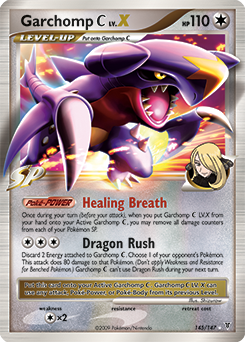 . ChenLock is an adaptation of it using Blaziken FB Lv.X
. ChenLock is an adaptation of it using Blaziken FB Lv.X as additional disruption and attacking power, that drops the dark disruption package. Both decks rely on Sableye’s Impersonate to use Cyrus’ Initiative
as additional disruption and attacking power, that drops the dark disruption package. Both decks rely on Sableye’s Impersonate to use Cyrus’ Initiative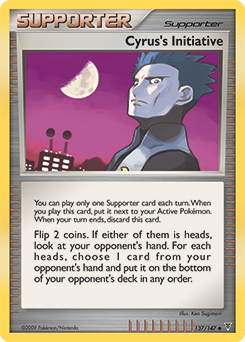 and disrupt the opponent’s hand. With added help of Chatot G
and disrupt the opponent’s hand. With added help of Chatot G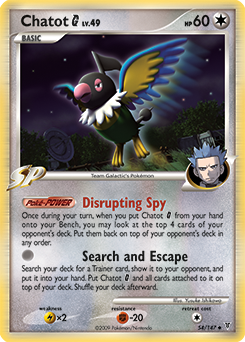 to prevent drawing out of the lock and Blaziken FB
to prevent drawing out of the lock and Blaziken FB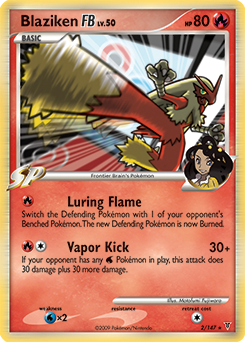 or Garchomp C Lv.X to neutralize Claydol, these decks quickly create an inescapable lock. Sableye also specializes in tearing apart decks reliant on Spiritomb with its Overconfident attack when boosted by Special Darkness Energy. Power Spray also ensures you can never get out of the lock with an emergency use of Uxie’s
or Garchomp C Lv.X to neutralize Claydol, these decks quickly create an inescapable lock. Sableye also specializes in tearing apart decks reliant on Spiritomb with its Overconfident attack when boosted by Special Darkness Energy. Power Spray also ensures you can never get out of the lock with an emergency use of Uxie’s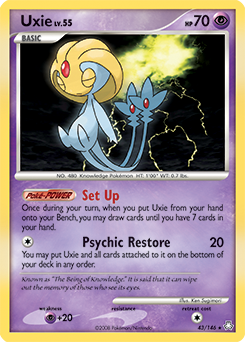 Set Up PokePower.
Set Up PokePower.




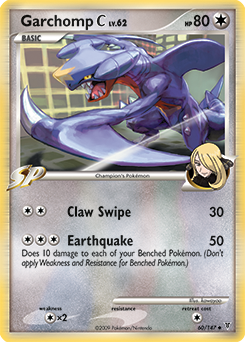

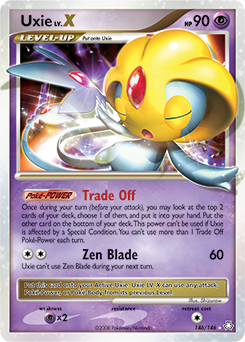



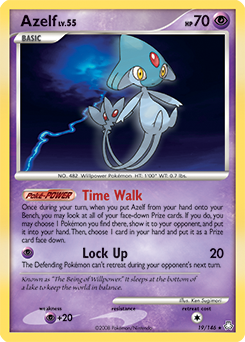

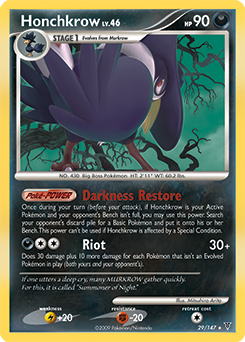

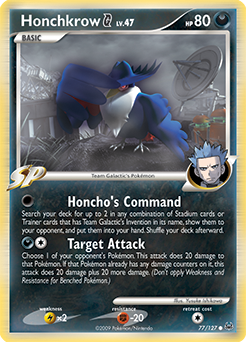

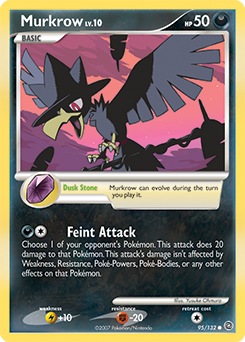



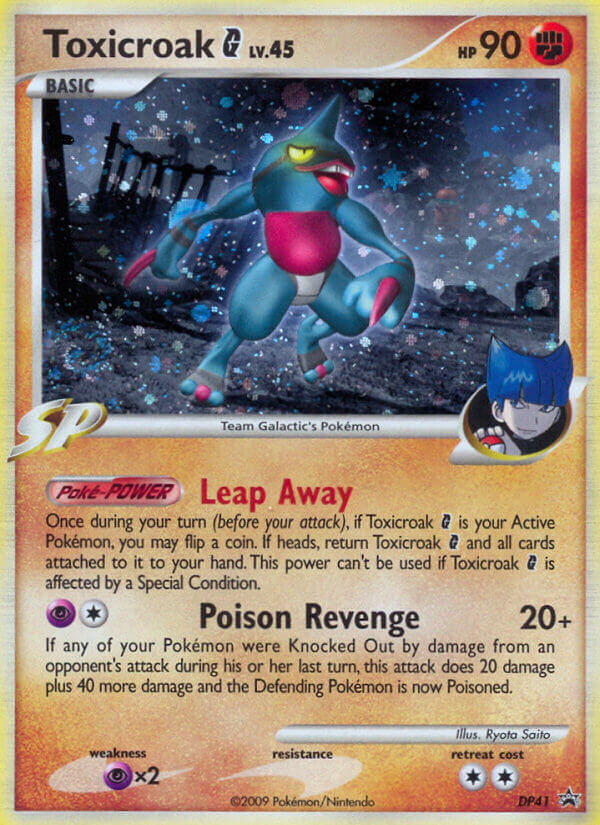

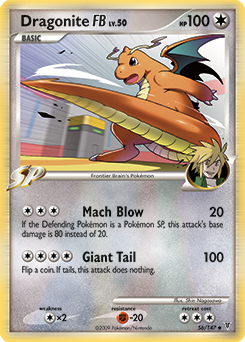



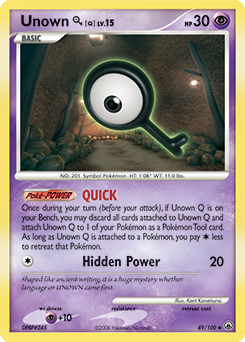



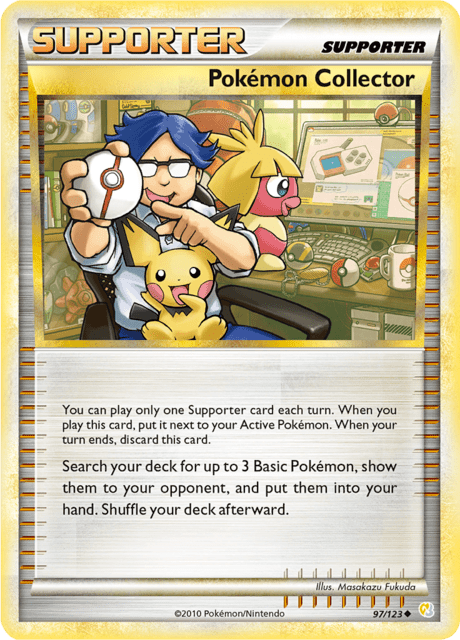





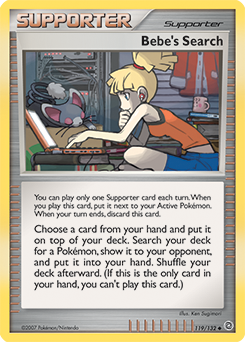

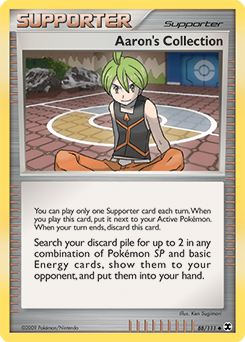

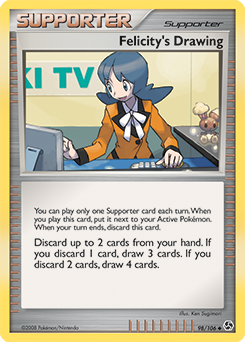

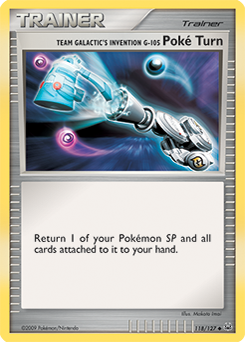



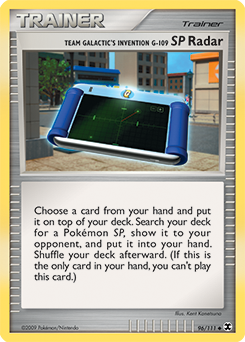



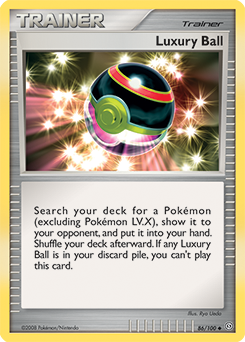

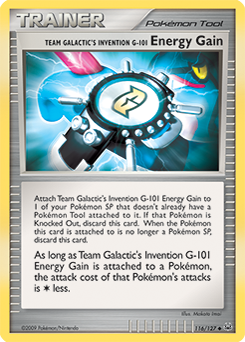

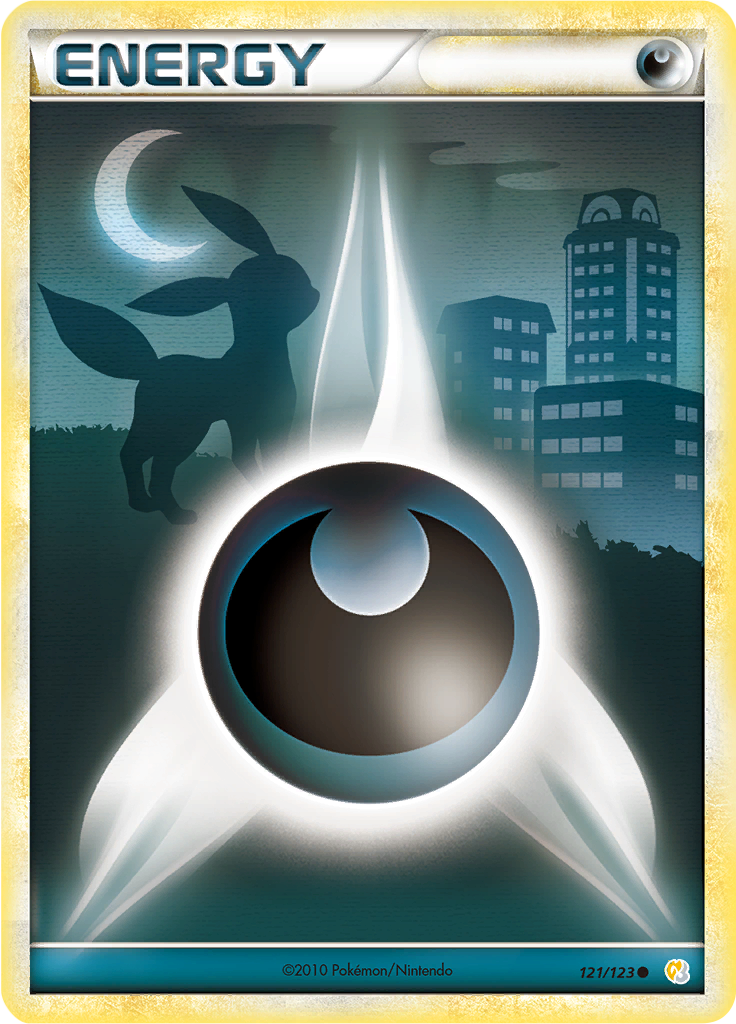

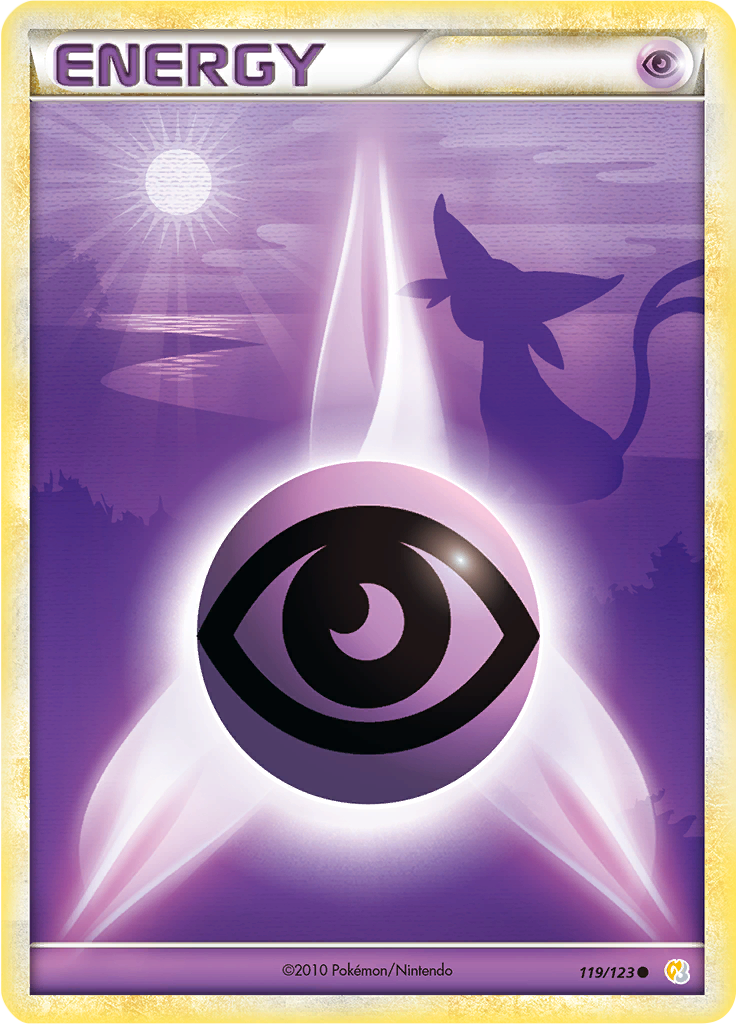

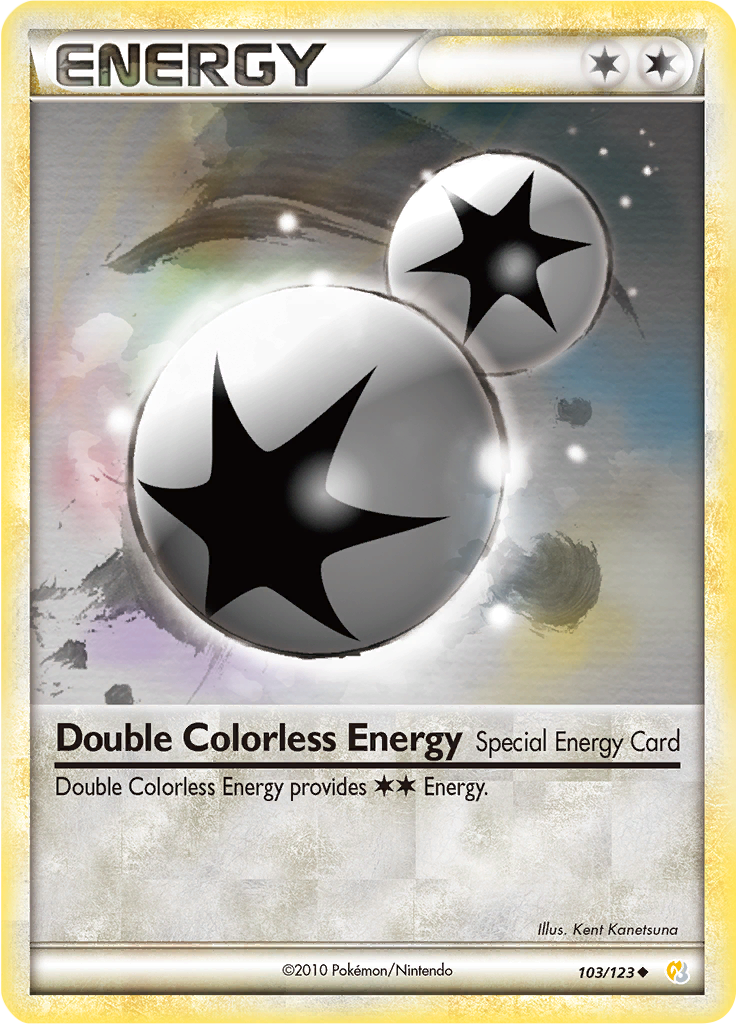

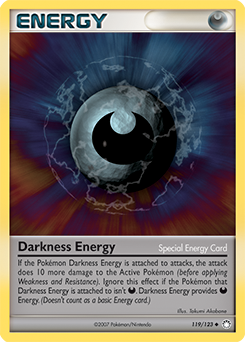

Source: Con Le - Top 16 Worlds
Gliscor:
This less successful lock deck will try to keep the opponent Paralyzed the entire game with Gliscor Lv.X’s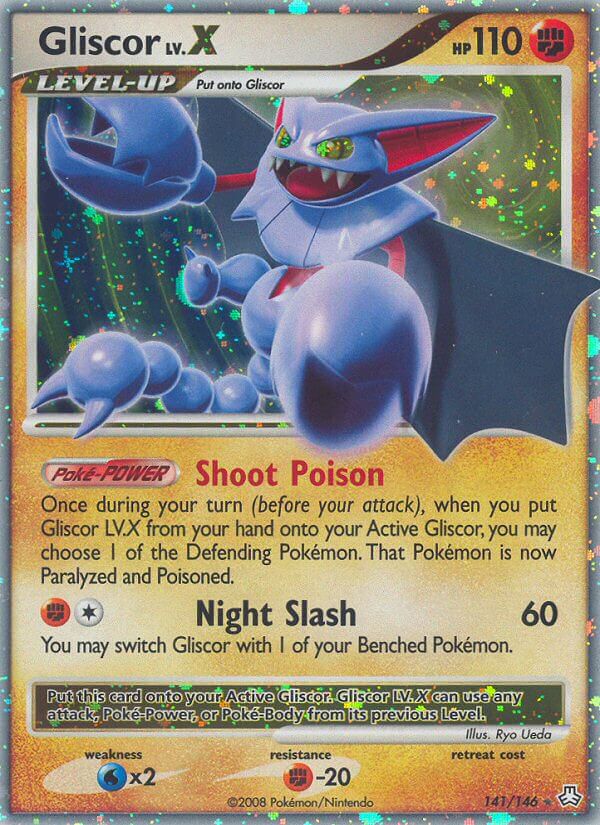 PokePower, before picking up Gliscor and moving into Spiritomb to prevent the opponent from using Trainer cards to escape. This deck is less successful due to the prevalence of Warp Energy and PokePower denial stopping it from maintaining or even beginning a lock.
PokePower, before picking up Gliscor and moving into Spiritomb to prevent the opponent from using Trainer cards to escape. This deck is less successful due to the prevalence of Warp Energy and PokePower denial stopping it from maintaining or even beginning a lock.
Flygon:
While it wasn’t utilized in David Sturm’s Top 32 Worlds Flyterra list, most Flygon lists nowadays take advantage of the Memory Berry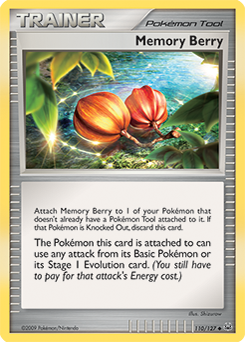 , which allows Flygon to copy the Sand Tomb trapping attack on Trapinch
, which allows Flygon to copy the Sand Tomb trapping attack on Trapinch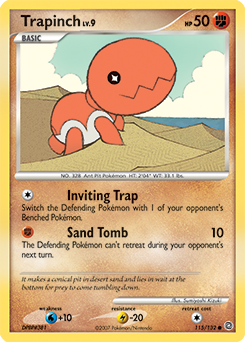 , while using Flygon Lv.X’s
, while using Flygon Lv.X’s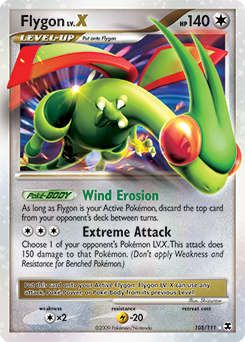 Wind Erosion Poke-Body to delete the opponent’s deck while their support Pokemon are haplessly trapped. While Sand Tomb would eventually Knock Out an opponent from damaging them enough, a Spiritomb, with its Colorless resistance, will take no damage from Flygon copying Sand Tomb, creating an instant loss if the Spiritomb player doesn’t have a way to escape (Warp Energy). “Well, just don’t let Spiritomb come into the Active Spot”, is an argument that would work if not for the use of Torterra Lv.X’s
Wind Erosion Poke-Body to delete the opponent’s deck while their support Pokemon are haplessly trapped. While Sand Tomb would eventually Knock Out an opponent from damaging them enough, a Spiritomb, with its Colorless resistance, will take no damage from Flygon copying Sand Tomb, creating an instant loss if the Spiritomb player doesn’t have a way to escape (Warp Energy). “Well, just don’t let Spiritomb come into the Active Spot”, is an argument that would work if not for the use of Torterra Lv.X’s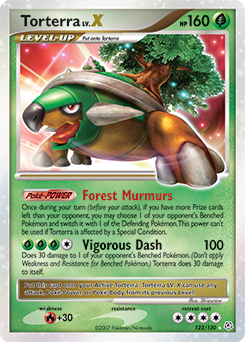 Forest Murmurs guaranteeing a target of their choice from your bench.
Forest Murmurs guaranteeing a target of their choice from your bench.


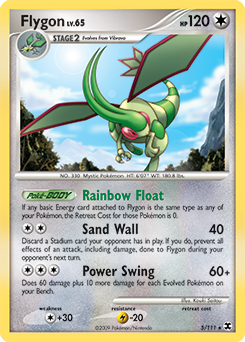

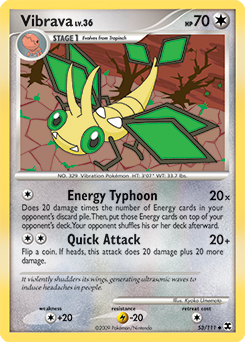





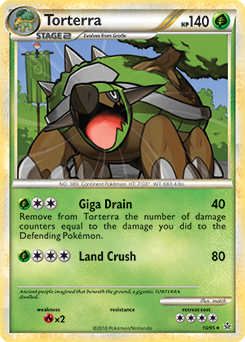

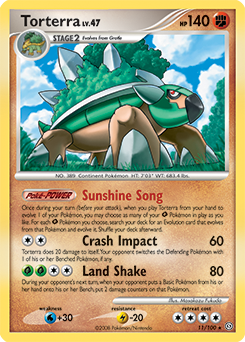

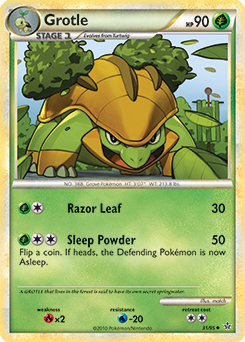

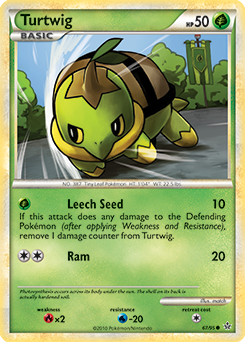



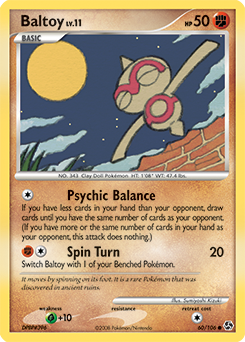

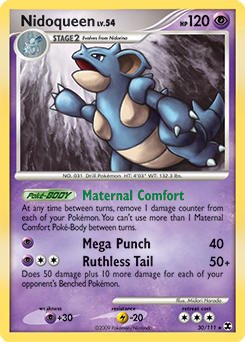

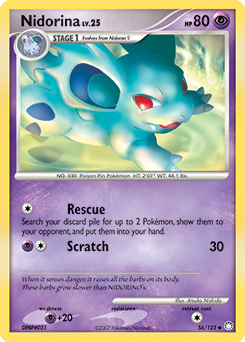

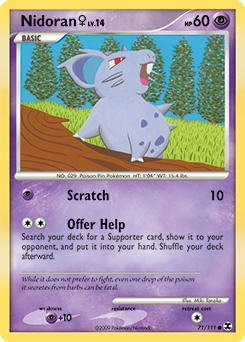



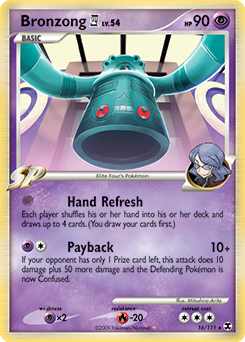





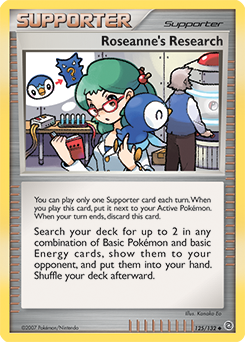



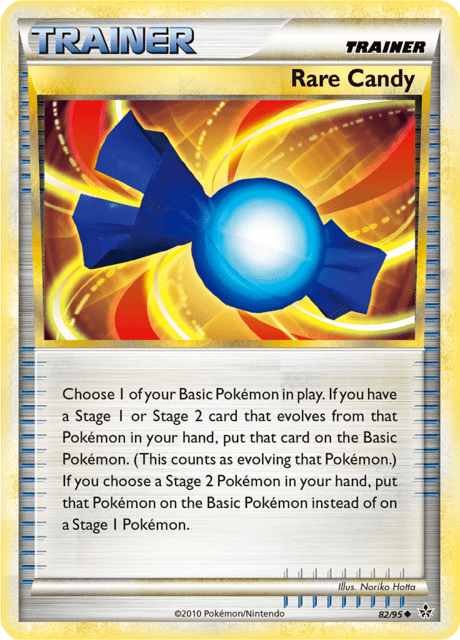

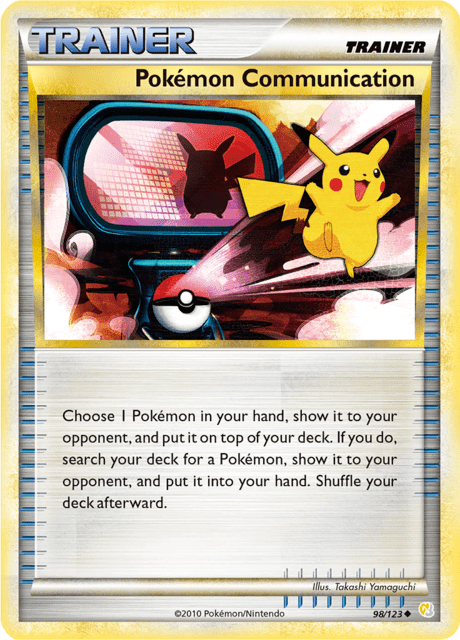

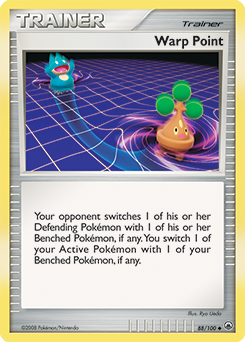

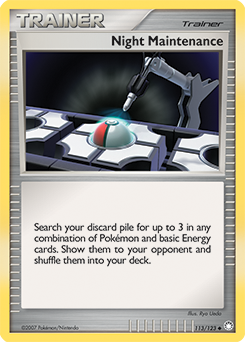



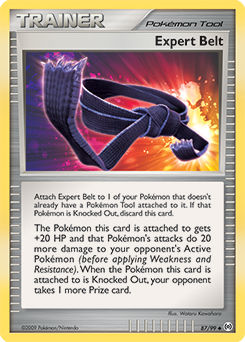

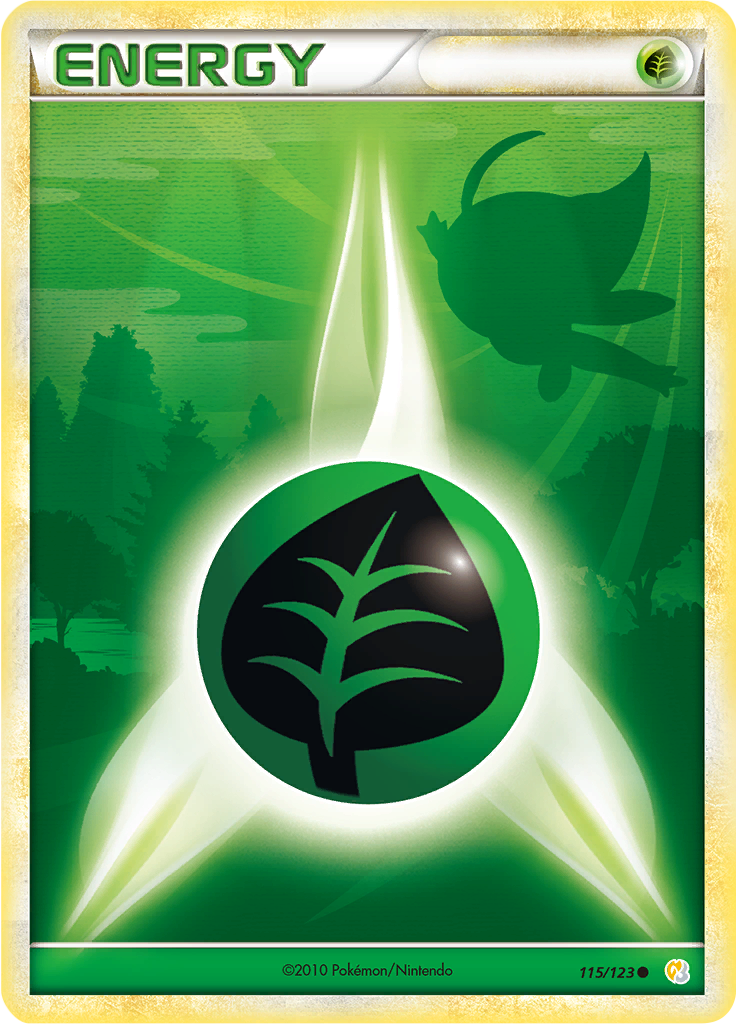



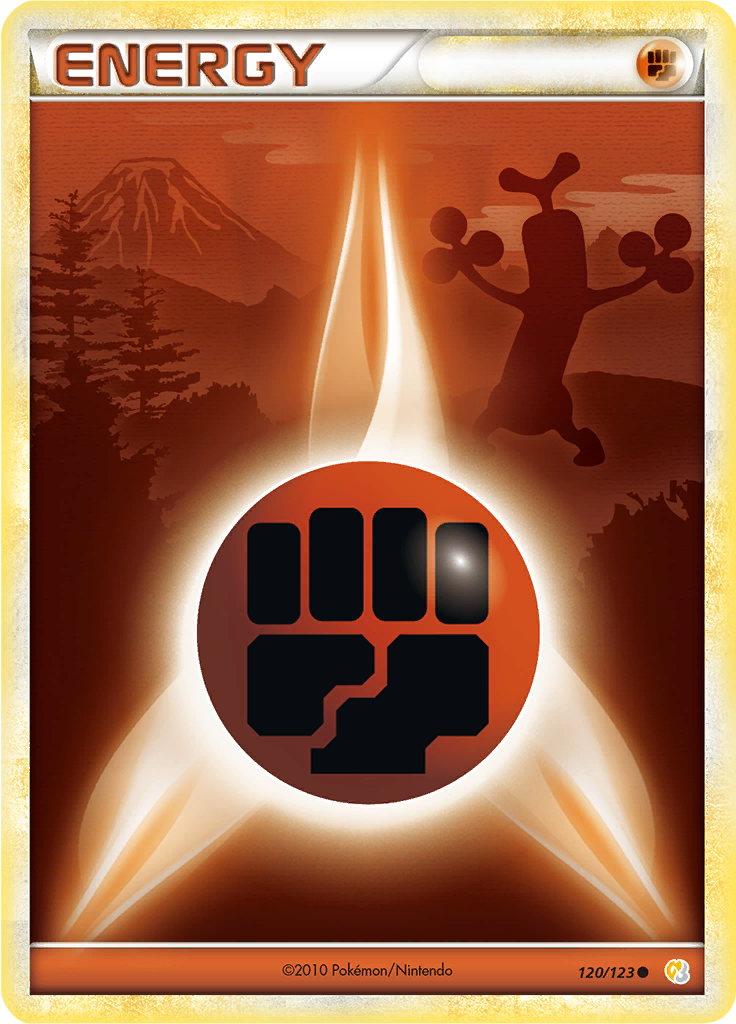



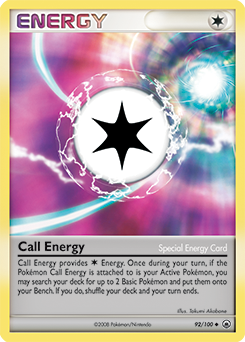

Source: David Sturm - Top 32 Worlds
What each of the above lock decks have in common - is a lack of player agency from the other player. I can’t affect the coin flip results of a Cyrus’ Initiative, nor can I prepare for my hand to be hit by Cyrus’ Initiative before I have even taken my first turn. If I don’t play ways to escape the Paralysis Lock and I start Spiritomb as my Active Pokemon at the beginning of the game, I probably just lose to Gliscor. Same story applies with escaping the Flygon’s Sand Tomb trap. Similar complaints are raised toward the more recent (Standard format) Snorlax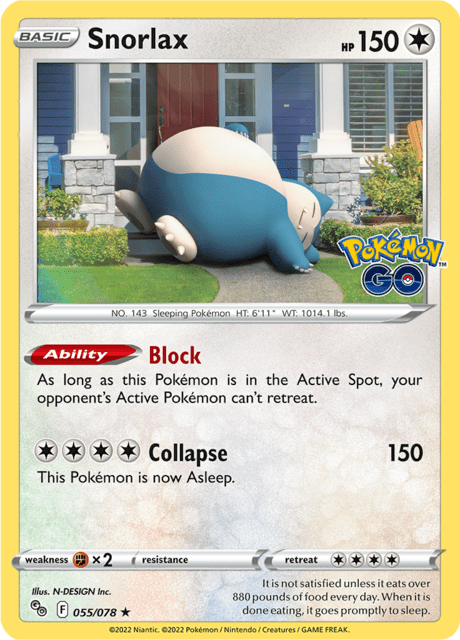 Block Stall decks, where some games are lost as soon as they begin if your deck isn’t adequately built to deal with it in multiple ways. In summary, losing games to factors outside of your control is not fun.
Block Stall decks, where some games are lost as soon as they begin if your deck isn’t adequately built to deal with it in multiple ways. In summary, losing games to factors outside of your control is not fun.
Double Colorless Energy
Double Colorless Energy (DCE) is probably the single most controversial card in the 2010 Worlds format. This strong special energy returned after a decade long hiatus from the game to wreak havoc on the 2010 Worlds format. DCE is used to power up many of the best attacks in the format like Garchomp Lv.X’s
(DCE) is probably the single most controversial card in the 2010 Worlds format. This strong special energy returned after a decade long hiatus from the game to wreak havoc on the 2010 Worlds format. DCE is used to power up many of the best attacks in the format like Garchomp Lv.X’s Dragon Rush and Gardevoir’s
Dragon Rush and Gardevoir’s Psychic Lock. Many argue that the card creates an unhealthy presence in the meta from the decks that take advantage of it.
Psychic Lock. Many argue that the card creates an unhealthy presence in the meta from the decks that take advantage of it.
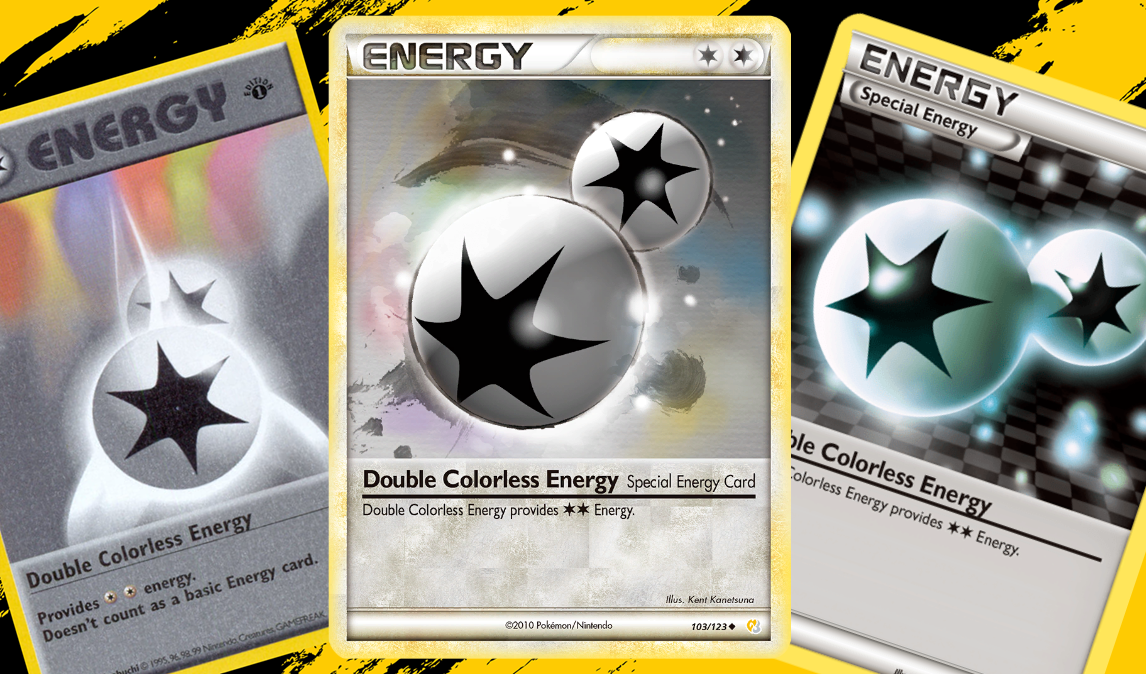
Dragon Rush being able to be powered up so easily is quite a formidable threat. Psychic Lock being effortlessly powered up allowing for the use of multiple Gardevoir attackers is also quite scary.
On the opposite end of the spectrum, I want to make an argument on why DCE is good for the meta. Specifically, I believe that 2010 Worlds without Double Colorless Energy would be a metagame highly centralized around CurseGar and Gyarados. Even with the existence of DCE, these are two of the strongest decks in the format, but without DCE their counters have a much harder time answering these decks.
In addition, DCE enables several more decks than it shuts down. DCE enables Garchomp, Regigigas, Abomasnow, Flygon, Steelix Prime, Hippowdon, Tangrowth, and Tyranitar. Some of these decks would not disappear entirely without DCE, but the acceleration of Gyarados decks and addition of Judge to CurseGar would make them far worse decks in the 2010 Worlds meta without DCE. Previously mentioned SP decks would struggle to maintain relevance. The SP decks that barely maintained their wins vs. CurseGar and Gyarados would now lose to it. DialgaChomp would survive, but no doubt be damaged in the loss of its second favorite energy card. Gardevoir would fall off as CurseGar is too apt of an answer to it and Gyarados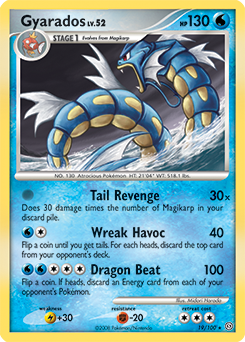 is too fast to deal with when your attacker that took 3 turns to power up is Knocked Out in a single attack.
is too fast to deal with when your attacker that took 3 turns to power up is Knocked Out in a single attack.
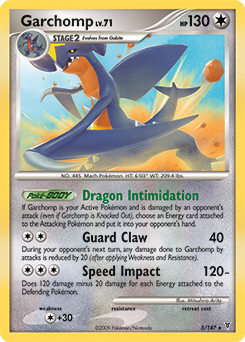
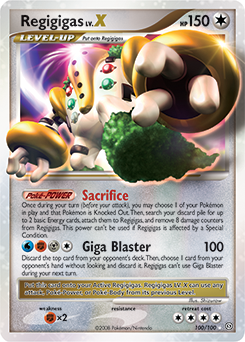
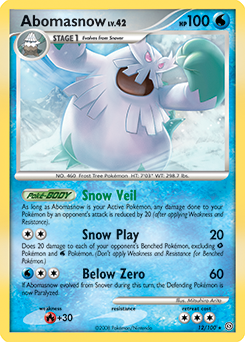

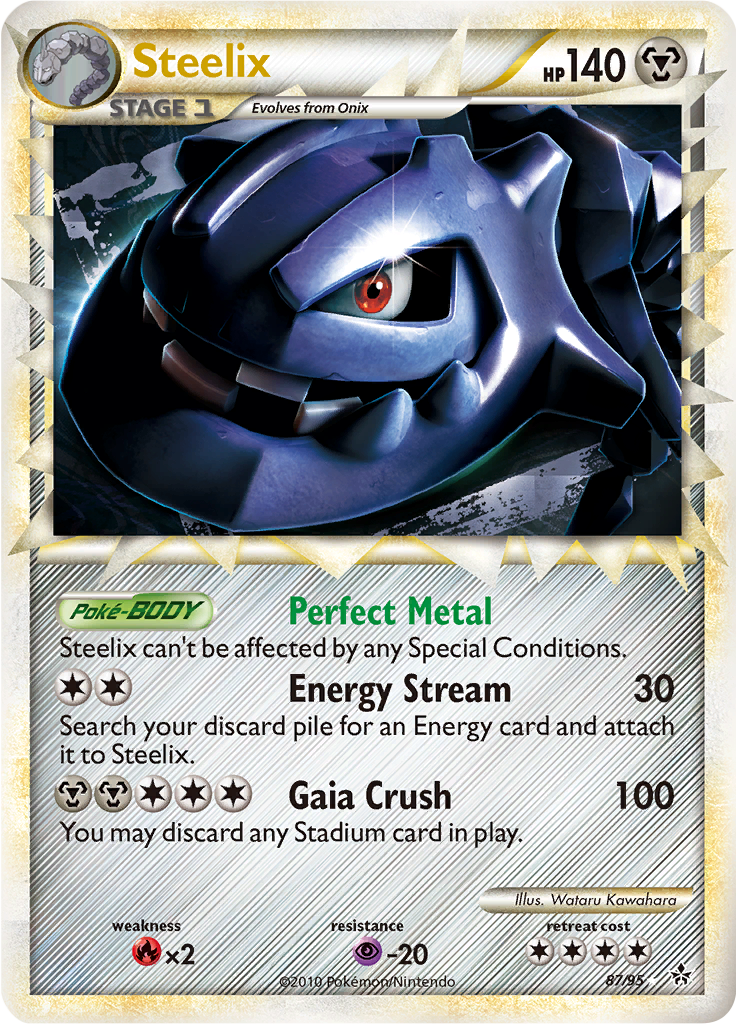
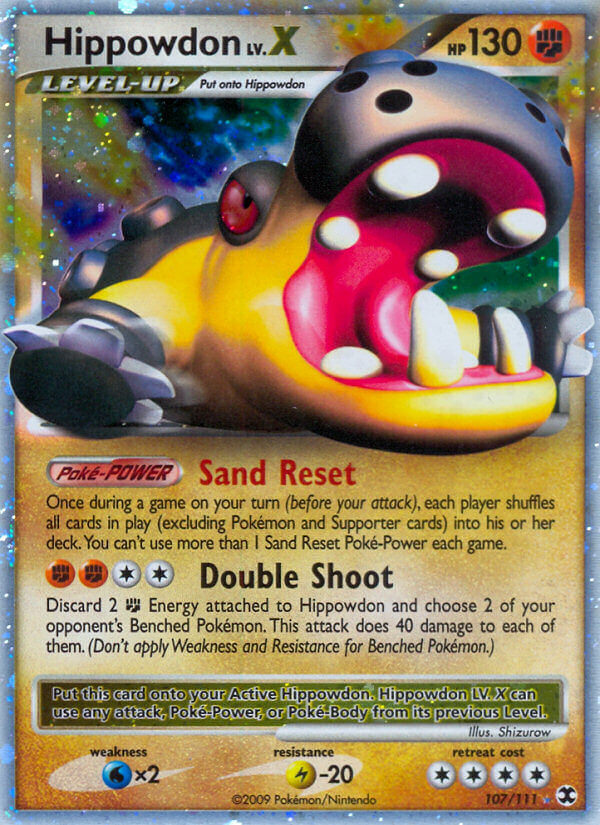
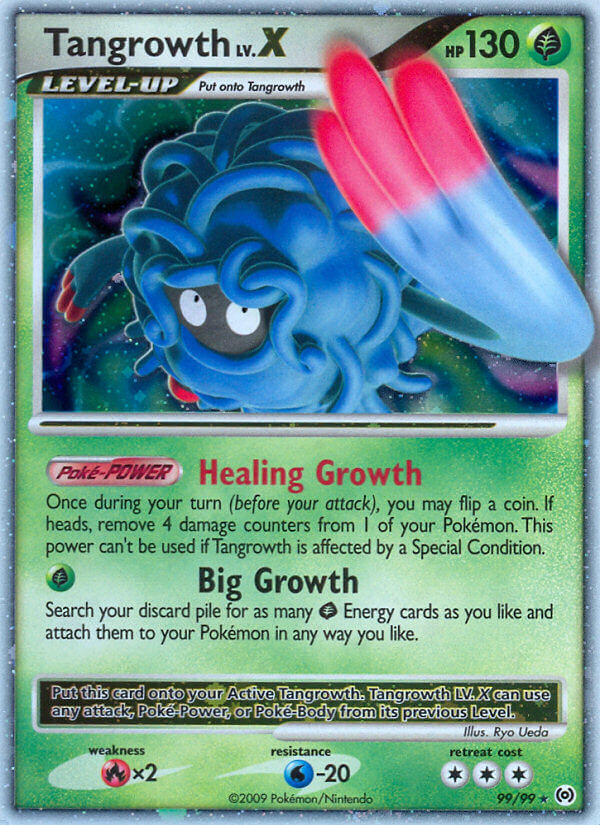
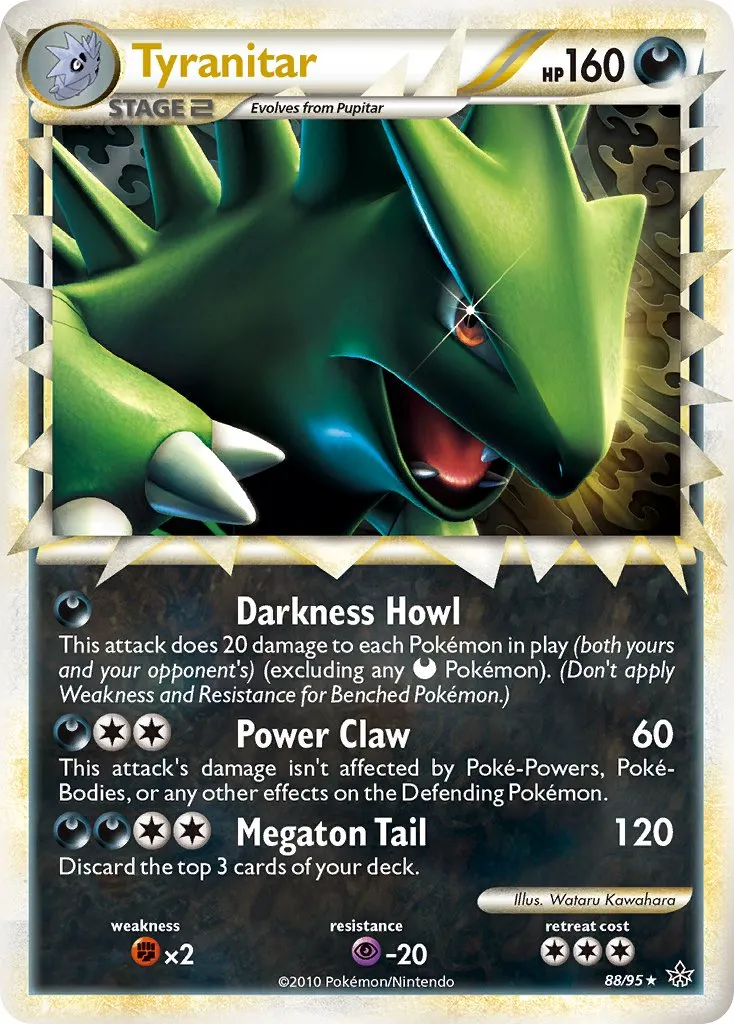
There’s no denying the power of DCE and its effect on the format. Some players target it as the root of their problems with the format, which I believe to be an inaccurate assumption. The best counters to DCE in the 2010 worlds format are playing a good deck that can deal with decks utilizing DCE. I promise you, it’s not as difficult as you may think.
Deck Choice Limitation & the Innovation of the Metagame
2010 Worlds is a format with a large variety of playable deck archetypes. For example, there were 14 different archetypes present in the Top 32 of the Masters Division of the World Championships. Even among archetypes, a large variance in how they were built can be observed with different variants of LuxChomp and different tech lines put into the Gardevoir decks present in Top 32.
Despite this, there are limitations in what decks you can succeed with in the modern context of the format. Certain decks fell off as changes to the meta occurred, and as with any format, some strategies simply cannot compete with the top decks.
Spread Strategies:
Playing a spread deck in the 2010 format is like being up a creek without a paddle. It’s not for a lack of capable spread attackers, as Abomasnow and Tyranitar
and Tyranitar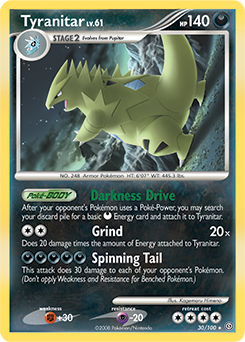 both come equipped with solid attacks. Spread is limited due to the popularity of SP decks and Nidoqueen
both come equipped with solid attacks. Spread is limited due to the popularity of SP decks and Nidoqueen , both of which answer spread flawlessly. Garchomp C Lv.X, a necessity in any SP deck, comes bearing its Healing Breath PokePower which heals all damage from all of their SP in play when used, preventing spread damage from staying on board. Abomasnow answers this by playing Ampharos
, both of which answer spread flawlessly. Garchomp C Lv.X, a necessity in any SP deck, comes bearing its Healing Breath PokePower which heals all damage from all of their SP in play when used, preventing spread damage from staying on board. Abomasnow answers this by playing Ampharos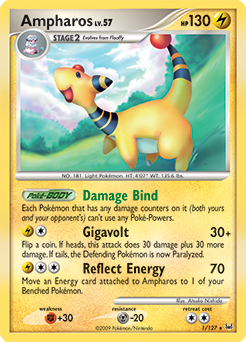 , which shuts off the use of Healing Breath. Tyranitar will instead use its other attack to Knock Out SPs one at a time than spread damage that can be healed off. Nidoqueen is the real nail in the coffin for spread though, as Abomasnow can’t reasonably answer it as it passively removes all of the damage on the opponent’s board and reactivates all of their Poke-Powers that Ampharos was turning off.
, which shuts off the use of Healing Breath. Tyranitar will instead use its other attack to Knock Out SPs one at a time than spread damage that can be healed off. Nidoqueen is the real nail in the coffin for spread though, as Abomasnow can’t reasonably answer it as it passively removes all of the damage on the opponent’s board and reactivates all of their Poke-Powers that Ampharos was turning off.


Your chances of hitting a deck playing Garchomp C Lv.X or Nidoqueen in a tournament is near certain, so spread strategies take a backseat in this format.
Rogue Decks:
As with any format, a number of rogue strategies exist that are tailor made to answer specific meta decks. Problem with the 2010 format - some of these meta decks are much more difficult to answer than others.
Despite popular belief, LuxChomp is, in my opinion, the easiest meta deck to answer with a rogue deck, depending on its variant. A large swath of rogue decks have arisen purely from their ability to take on LuxChomp. Let’s take, for example, the previously mentioned Abomasnow Ampharos deck, as well as tank decks like Tangrowth and Hippowdon. In the 2010 season, speed decks like Kingdra Prime and Donphan Prime fulfilled a similar role.
These decks all survive off of preying on LuxChomp, as their matchups into the other meta decks are shaky at best. Even some LuxChomp variants, carrying techs like Blaziken FB Lv.X or Entei & Raikou LEGEND
or Entei & Raikou LEGEND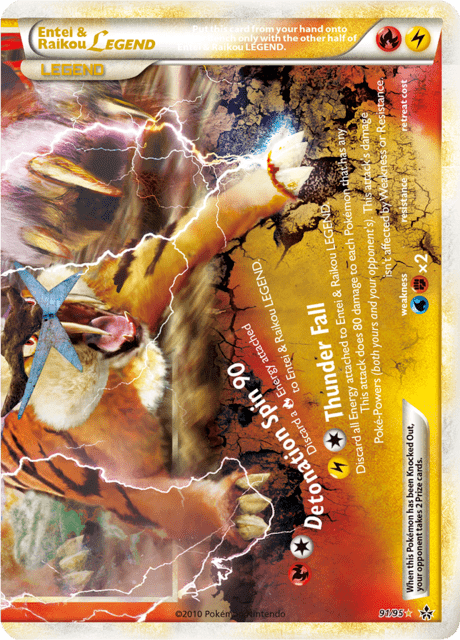 , aptly answer these decks and erase their only advantage into the meta. The popularity of regular LuxChomp, casual enjoyment of the format, and the occasional good matchup into another deck keeps these rogue decks alive despite their weaknesses.
, aptly answer these decks and erase their only advantage into the meta. The popularity of regular LuxChomp, casual enjoyment of the format, and the occasional good matchup into another deck keeps these rogue decks alive despite their weaknesses.
In this format, what separates a Tier 2 deck from a rogue deck, in my eyes, is the ability to answer more than just LuxChomp. A tier 2 deck like Garchomp SV, depending on how it is built, can beat LuxChomp, but also can play well into some variants of Gardevoir and has a great matchup against Gyarados. A rogue deck like Hippowdon can deal with LuxChomp and steal games against a lucky matchup like Regigigas - but loses to Gyarados, Gardevoir, CurseGar, and Jumpluff.
With some very dominant top decks in this format, where does innovation come from in this format then? Mainly, the refining of pre-established archetypes and exploration of partners for already good cards. One such example is the creation of the GG AMU deck (Gardevoir/Gallade + Azelf/Mesprit/Uxie), which is a Gardevoir list that answers decks that began to pop up to counter the standard Gardevoir deck, such as Steelix Prime.
Another example is a deck I’ve been working on lately: MetaGon




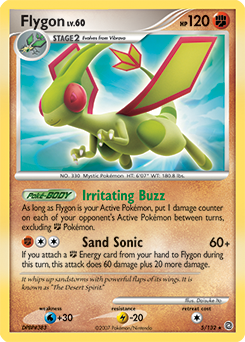



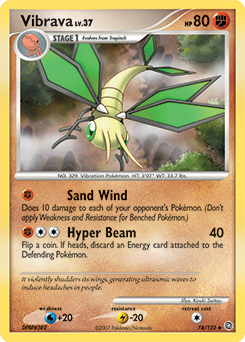



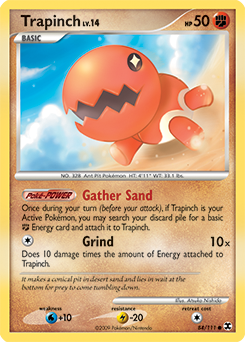



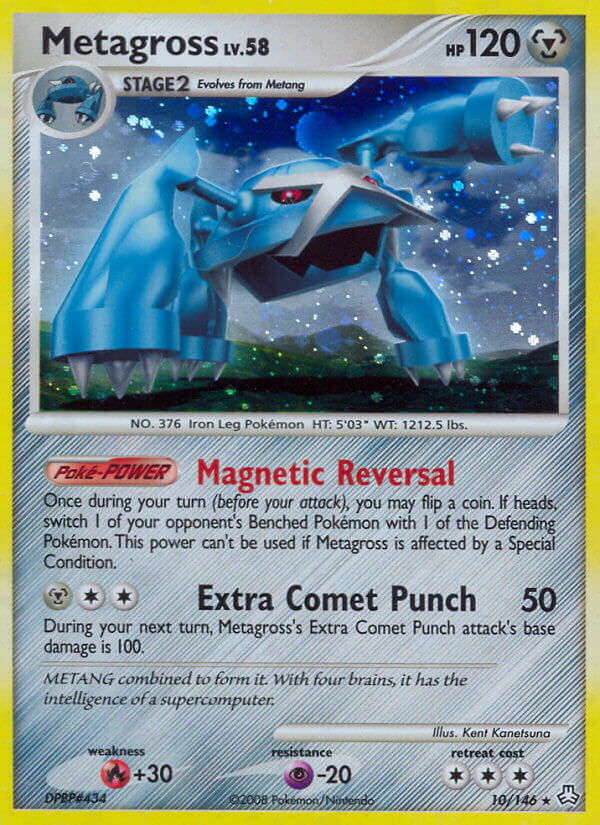

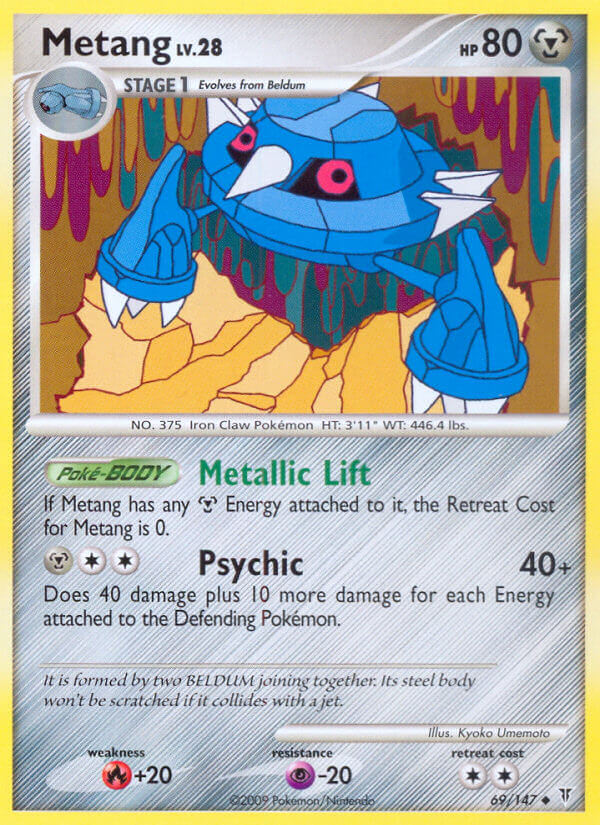

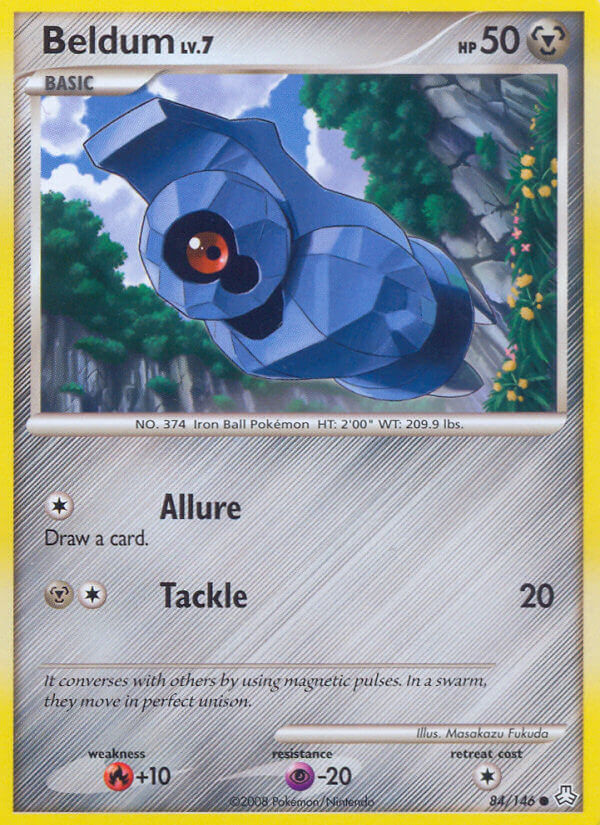





































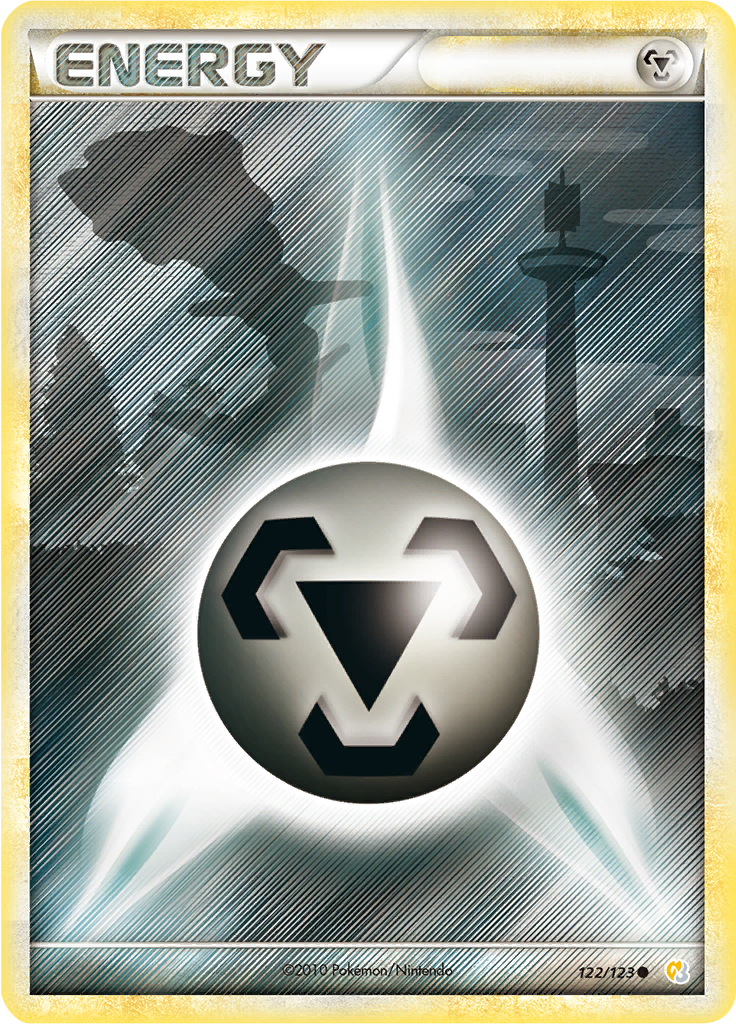











This deck utilizes Flygon Lv.X and the trapping strategy that I covered previously to pair with Metagross and its gusting Magnetic Reversal Poke-Power. Metagross also provides a solid attacker in non-SP matchups. With Honchkrow added to put Spiritombs into play repeatedly, this deck is designed to take on decks reliant on Spiritomb while being able to answer other decks with a unique blend of offense and disruption
If you want to see a full video explaining this deck, I made one that you can view here. (YouTube)
Is SP Broken?
The SP engine creates one of the most unique and fun play styles we’ve ever seen in the Pokemon TCG, using a combination of disruption and unmatched versatility to have an answer to every deck in the metagame. In short, is SP broken? Yes.
SP has exclusive access to some of the best trainer cards ever printed. Its attackers don’t let up either. Garchomp C Lv.X was undoubtedly the best attacker of its time. Decks like Jumpluff, Donphan Prime, and Kingdra Prime joined LuxChomp in a coalition of speed decks that excelled at taking 6 Prize Cards as fast as possible, or taking more than the opponent when the round time was called.
Now, is SP broken in context of the modern 2010 meta? Not as much. The format has plenty of ways to answer SP built into lists. Spiritomb keeps SP’s trainers in check, while Judge
keeps SP’s trainers in check, while Judge keeps their hand size low so they can’t make full usage of their versatility every turn. Poke-Power lock stops them healing, gusting, and drawing cards, while the AMU engine, that I mentioned previously, slows down SP’s attacks.
keeps their hand size low so they can’t make full usage of their versatility every turn. Poke-Power lock stops them healing, gusting, and drawing cards, while the AMU engine, that I mentioned previously, slows down SP’s attacks.
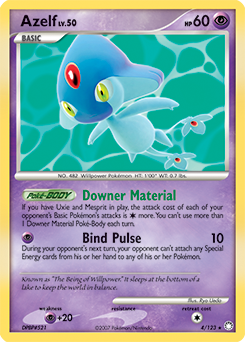
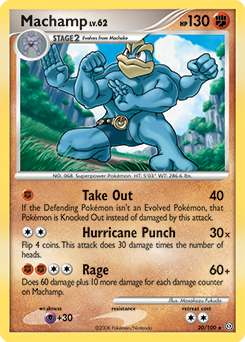
Both Azelf & Machamp are powerful against an unprepared SP deck.
There are plenty of cards or decks from this time that, in a vacuum, seem broken. Broken Time-Space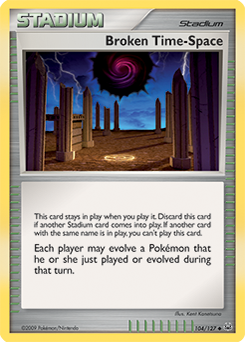 , in particular, boggles the mind of modern players imagining all they could get up to with it. In the context of this format though, especially the modern metagame that has evolved to deal with its many components, SP fits right in. Don’t let this fool you though, SP is still a strong presence with its many forms and adaptations. It must be respected.
, in particular, boggles the mind of modern players imagining all they could get up to with it. In the context of this format though, especially the modern metagame that has evolved to deal with its many components, SP fits right in. Don’t let this fool you though, SP is still a strong presence with its many forms and adaptations. It must be respected.
Inaccessibility
Cost:
With early Diamond & Pearl cards nearing their 17th birthday in 2024... the cost of these old cards have slowly creeped up over time. The pandemic caused a staggering rise in the price of retro staples, such as Mesprit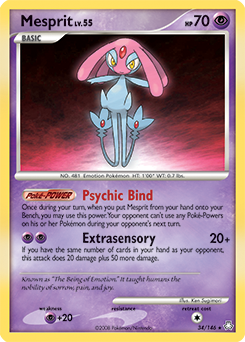 , which cost $15 in 2020. While Mesprit in particular has recovered from this temporary spike, most of the general staples of this format cost far more than what I paid for them 2 years ago. DCE, Uxie LA, Baltoy GE, and Roseanne’s Research have doubled in price, while Judge’s resurgence in popularity as a standard format card has quintupled its price. The cards commonly seen in SP decks have never been cheap to begin with, and while the Celebrations Classic Collection has made the Lv.X staples more accessible, the SP Trainers and basic Pokemon (most notably Toxicroak
, which cost $15 in 2020. While Mesprit in particular has recovered from this temporary spike, most of the general staples of this format cost far more than what I paid for them 2 years ago. DCE, Uxie LA, Baltoy GE, and Roseanne’s Research have doubled in price, while Judge’s resurgence in popularity as a standard format card has quintupled its price. The cards commonly seen in SP decks have never been cheap to begin with, and while the Celebrations Classic Collection has made the Lv.X staples more accessible, the SP Trainers and basic Pokemon (most notably Toxicroak ), cost more now than ever, since their initial rotation.
), cost more now than ever, since their initial rotation.
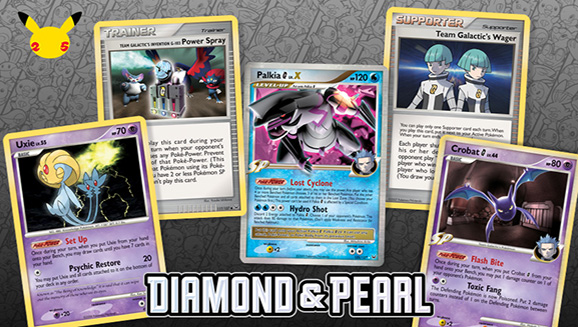
There’s no way around the cost of the format, and while it doesn’t cost as much as Ex series formats, an investment in 2010 decks is going to take some financial commitment if you’re not willing to print proxy your decks.
Complexity:
Lastly, the complexity of the format. Throughout this entire article thus far, I’ve used the word “Lock” quite a lot. While not every deck in the 2010 Worlds format plays into a hard lock, almost every deck in the format is playing some sort of disruption to throw their opponent off of their game.
For example, the commonly played Dusknoir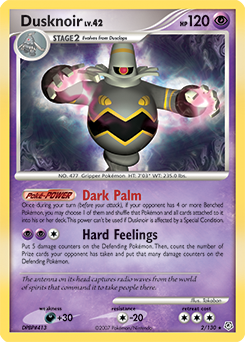 which limits players to only having 3 Benched Pokemon, less they fall victim to its Dark Palm.
which limits players to only having 3 Benched Pokemon, less they fall victim to its Dark Palm.
Poke-Power denial is common too, with Gardevoir's Psychic Lock, SP’s Power Spray
Psychic Lock, SP’s Power Spray , and the occasional Alakazam
, and the occasional Alakazam 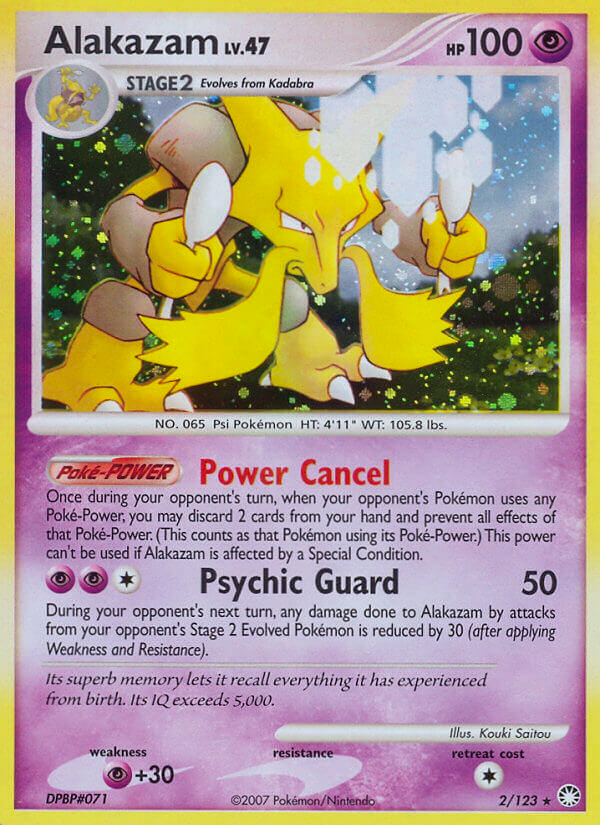 showing up to turn off your Poke-Powers. Additionally, Special Conditions turn off a Pokemon’s Poke-Powers, so Blaziken FB
showing up to turn off your Poke-Powers. Additionally, Special Conditions turn off a Pokemon’s Poke-Powers, so Blaziken FB and Froslass GL
and Froslass GL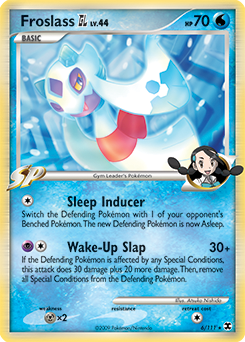 become additional PokePower denial.
become additional PokePower denial.
Trainer lock is seen in the omnipresent Spiritomb we talked about extensively earlier. CurseGar, Magnezone, and Gliscor decks will try to keep you from using Trainers the entire game. Dialga G’s
we talked about extensively earlier. CurseGar, Magnezone, and Gliscor decks will try to keep you from using Trainers the entire game. Dialga G’s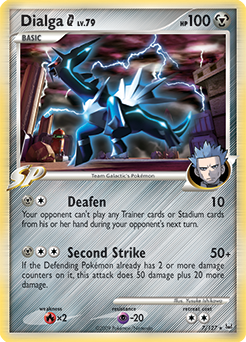 Deafen as well as Dialga G Lv.X’s
Deafen as well as Dialga G Lv.X’s Time Crystal initiates Trainer, Stadium, and Poke-Body lock.
Time Crystal initiates Trainer, Stadium, and Poke-Body lock.
Even more honest decks like Gyarados utilize the AMU engine to make it harder for SP to attack, and will occasionally employ Giratina's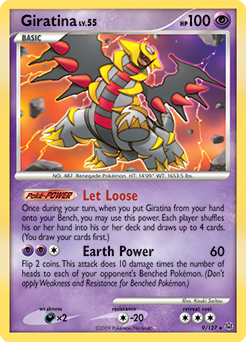 Let Loose for added hand disruption.
Let Loose for added hand disruption.
I could name all of the different limitations put out by these decks, but I won’t. You get the point by now. Almost every 2010 format deck is putting out consistent amounts of disruption. This is a daunting reality for players new to the format. Everyone remembers the first time they lost a game to Dark Palm. With so many layers of red tape on every action you take in the 2010 Worlds format, the complexity is high and forgiveness for mistakes is low. This leads to the format being more inaccessible than the pick up and play formats we see today.
Conclusion
This complexity is also what makes the format so enjoyable for players like myself. I want to be upset when my misplay costs me the game 10 turns later, I want to not be allowed to use my Poke-Powers, Trainers, and attacks so that when I create an opportunity to use them, it devastates my opponent. As I said in the beginning, this is my favorite format. What may look like flaws to other people are things I enjoy as they allow me to express my skill as a player and make meaningful deck building decisions. Except Sableye ... That card can leave.
... That card can leave.
Thanks to Ruby Retro @Pkmn_RubyRetro, Jay Hornung @TheLostZone, and @NOLOAF for helping oversee the revision of this article.


